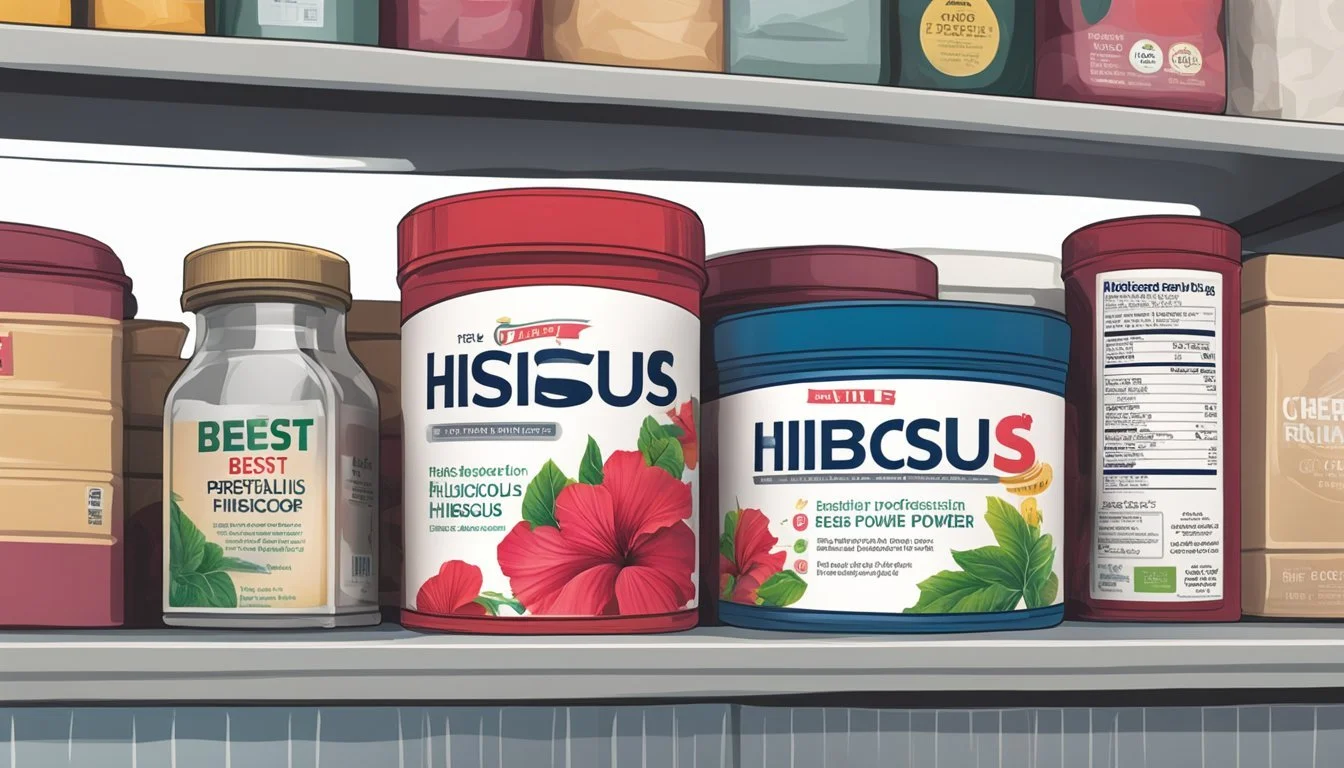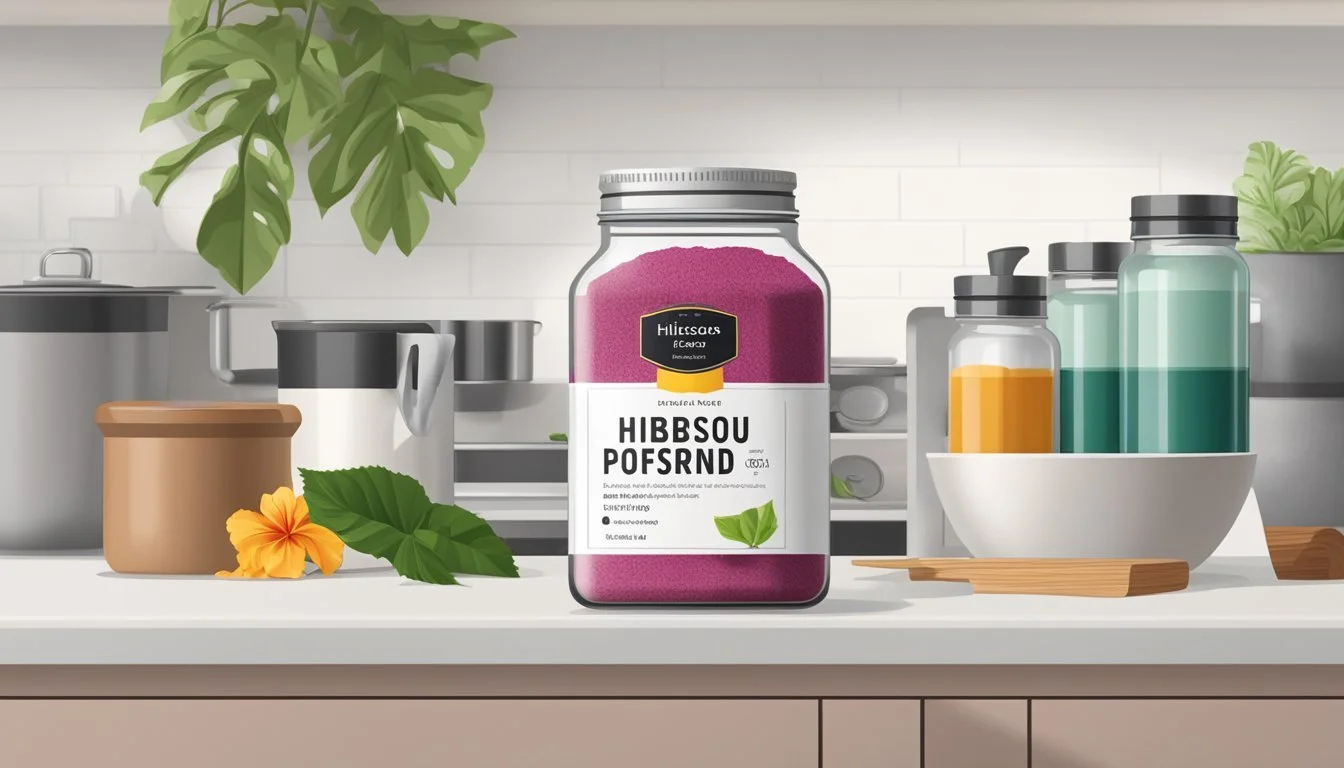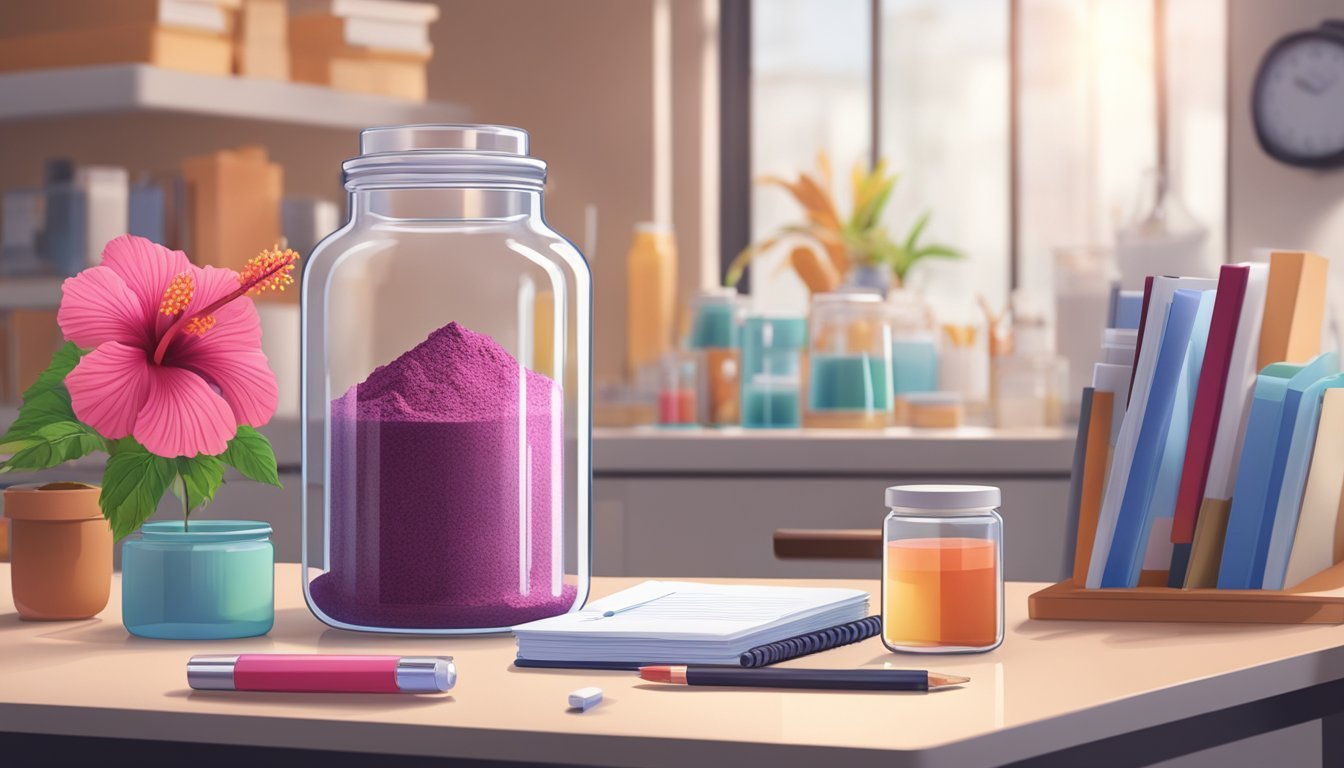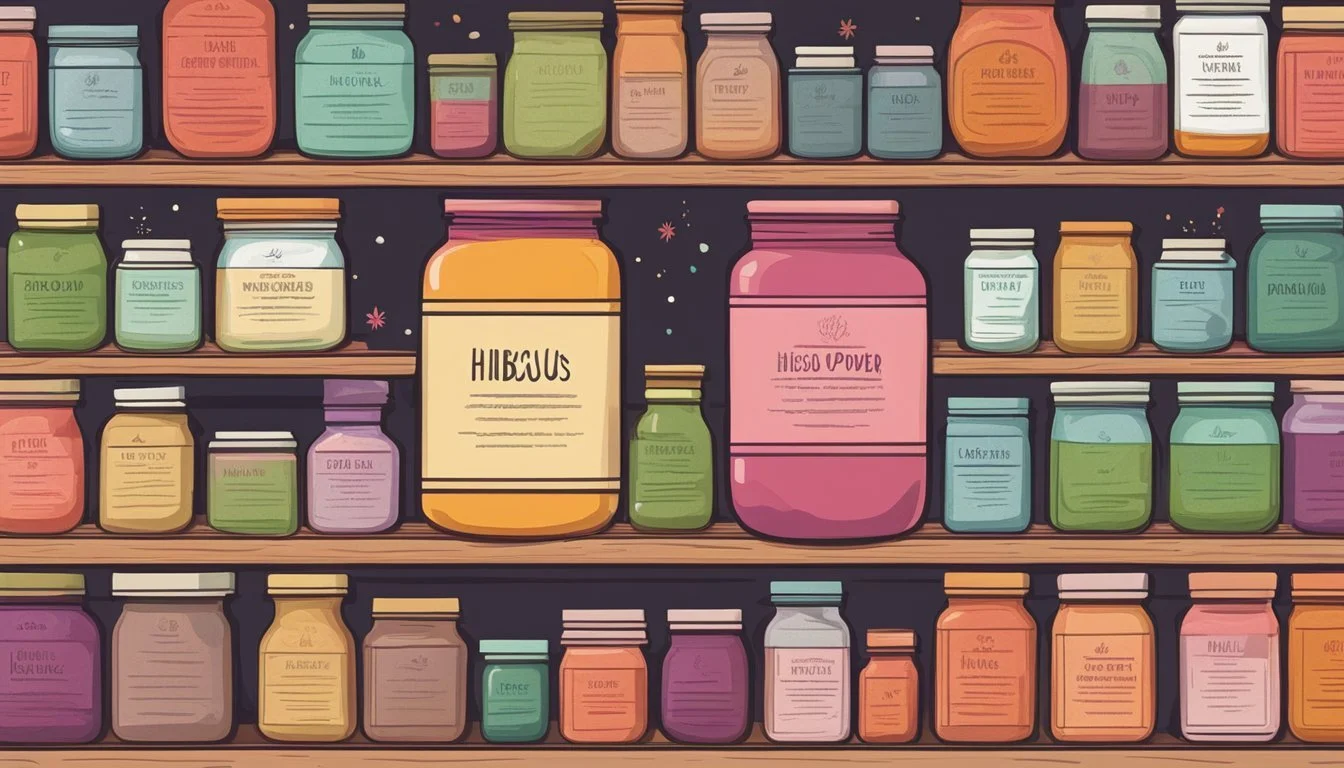How Long Does Hibiscus Powder Last?
Shelf Life and Storage Tips
When it comes to preserving the vibrant qualities of hibiscus, transforming the petals into powder form is an effective method. Hibiscus powder, known for its tart flavor and array of uses, from culinary applications to natural dyes, requires proper storage to maintain its potency and prevent spoilage. Like many powdered herbs and spices, the shelf life of hibiscus powder largely depends on storage conditions, which should be cool, dark, and dry to extend its longevity.
Under optimal storage conditions, hibiscus powder can retain its quality for up to two years. However, several factors might reduce its shelf life, such as exposure to moisture, heat, and direct light, which can degrade the powder and lead to loss of flavor and color. Hibiscus powder does not spoil in the traditional sense but will gradually lose its intensity, making it less effective in its applications.
It's essential to store hibiscus powder in an airtight container to protect it from humidity and other contaminants. While the powder can last for a considerable amount of time, it is best to monitor its texture and aroma regularly. A change in these properties may indicate that the powder is past its prime and should be replaced to ensure the best results in its use.
Understanding Hibiscus Powder
Hibiscus powder is derived from hibiscus flowers, specifically Hibiscus sabdariffa, known for their rich content of bioactive compounds. This powder, used in a variety of contexts, holds significance for its culinary, cosmetic, and medicinal properties.
Origin and Botanical Aspects
Hibiscus sabdariffa, the plant from which hibiscus powder is made, thrives in tropical and subtropical climates. The flowers of this species are notable for their vibrant color, which can be attributed to the pigments they contain. These pigments are not only important for the plant’s characteristics but also contribute to the powder's uses.
Botanical Classification:
Family: Malvaceae
Genus: Hibiscus
Species: H. sabdariffa
The flowers are usually harvested when they are in full bloom and subsequently dried. Once dried, they are ground into a fine powder. Hibiscus powder can retain its quality for several months when stored correctly in a cool, dark place.
Chemical Composition
The chemical composition of hibiscus powder is complex and includes a mixture of bioactive compounds that define its utility. These compounds include antioxidants, flavonoids, phenolic acids, and organic acids, all of which possess health-promoting properties.
Major Bioactive Compounds:
Antioxidants: Help in protecting cells from oxidative damage.
Flavonoids: Contribute to the pigmentation and have various health benefits.
Phenolic Acids: Responsible for some of the plant's therapeutic effects.
Organic Acids: Give the characteristic tartness and also exert mild exfoliating effects.
The combination of these compounds makes hibiscus powder a versatile ingredient, suitable for use in medicinal teas, natural skincare formulations, and as a colorful additive in culinary dishes.
Health and Nutrition
In the realm of health and nutrition, hibiscus powder is celebrated for its potential benefits and traditional medicinal uses. The powder, derived from the flowers of the hibiscus plant, is not only a vibrant food coloring but also a nutrient-rich supplement.
Potential Health Benefits
Research indicates that hibiscus powder, commonly used in tea, may contribute significantly to health improvements. Rich in antioxidants, such as vitamin C and anthocyanins, it plays a role in combatting oxidative stress and reducing the presence of harmful free radicals in the body.
Here's a list of other potential benefits:
Blood Pressure: Hibiscus has been linked to lower systolic blood pressure in some studies, potentially making it beneficial for those with high blood pressure.
Cholesterol Levels: Regular consumption may improve cholesterol levels by increasing HDL (good) cholesterol and decreasing LDL (bad) cholesterol, which could reduce the risk of heart disease.
Weight Loss: Some evidence suggests hibiscus can aid in weight loss and combat obesity through its effects on metabolism and fat accumulation.
Blood Sugar Regulation: It might also help those with high blood sugar or diabetes by improving insulin resistance.
Hibiscus Powder in Traditional Medicine
Hibiscus powder has long been valued in traditional medical systems for its health-supporting qualities. In different cultures, it has been utilized to treat a variety of ailments and as a general health tonic.
Key uses include:
Dietary supplement for improving overall well-being;
Ingredient in remedies aimed at addressing specific conditions such as high blood pressure and diabetes.
In conclusion, the consistent inclusion of hibiscus powder in a diet, typically as a tea, is not just a tribute to tradition but also a step towards embracing a food with multiple supportive health properties.
Culinary Applications
Hibiscus powder offers a unique sour flavor and a vibrant color that can be incorporated into various culinary creations. This powder, derived from the hibiscus flower, is commonly used in teas and foods for both its taste and aesthetic appeal.
Brewing Hibiscus Tea
To brew hibiscus tea, it is recommended to mix a teaspoon of hibiscus powder with a cup of hot water. Hibiscus tea, often referred to as sour tea, is appreciated for its ruby-red color and tart taste. This beverage can be sweetened with sugar or honey to balance the natural sourness. Hibiscus tea can be served both hot and cold, making it a versatile option for any season.
Cooking with Hibiscus Powder
In culinary applications, hibiscus powder can be used as a natural food coloring agent to give foods a distinct red hue. It works well in dry rubs for tropical-themed dishes or mixed into sugar to create a colored topping for desserts. The powder's fine consistency allows it to be incorporated into sauces or marinades easily. When using hibiscus powder in the kitchen, one should carefully monitor the quantity to prevent the dish from becoming too tart. Here are specific ways to include hibiscus powder in cooking:
Tropical Dishes: Incorporate a small amount of hibiscus powder into a tropical salsa or fruit compote to enhance the dish's color and introduce a tangy flavor.
Desserts: Mix hibiscus powder with sugar to create a decorative topping for cakes and cookies, or use it as a natural flavoring in sorbets and ice creams.
Herb Mixes: Combine hibiscus powder with other dried herbs and spices to create unique seasoning blends for meat or vegetable dishes.
Sauces and Marinades: A teaspoon of hibiscus powder can add a surprising twist to barbecue sauces or marinades, coupling the powder's sourness with the savory taste of the sauce.
Hibiscus powder is not only a flavorful treat but also contributes to the visual appeal of food presentations. Its ability to impart a rich color naturally makes it a healthier option compared to synthetic food colorings. When cooking with hibiscus powder, one must consider the moisture and carbohydrates in the food as they interact with the powder to produce the best taste and texture. If the hibiscus powder is applied to foods that will be cooked in an oven, like pastries, it should be sprinkled on post-baking to maintain the vibrancy of the color.
Preservation and Storage
Proper preservation and storage of hibiscus powder are crucial to maintaining its quality and extending its shelf life. They ensure the powder remains vibrant and flavorsome for culinary or herbal uses.
Optimal Storage Conditions
To preserve the quality of hibiscus powder, it should be stored in a dry and cool place. Ideally, choose an airtight container to protect it from moisture and other contaminants. The container should be placed away from direct sunlight, as light can degrade the powder over time. It's also recommended to keep the powder in a location with a stable temperature to prevent any degradation of quality. Under these conditions, hibiscus powder can maintain its potency for an impressive duration.
Temperature: Cool environment.
Moisture: Airtight container to prevent moisture.
Light: Store in a dark place.
Recognizing Spoilage
The shelf life of hibiscus powder, similar to dried flowers, can range up to a few years if stored properly. However, users should be aware of the signs of spoilage. A change in the color and aroma of the powder can indicate that it is no longer suitable for use. The presence of moisture inside the container, visible mold, or a stale smell are clear indicators that the hibiscus powder has spoiled and should not be consumed or used.
Color Change: Loss of vibrancy can indicate spoilage.
Aroma: Any off-smelling scent is a warning sign.
Moisture and Mold: Indicators that the powder needs to be discarded.
Usage Recommendations
When incorporating hibiscus powder into one's regimen, it is crucial to adhere to recommended doses and be aware of safety considerations as well as potential side effects. Proper usage ensures maximized benefits while minimizing risk.
Recommended Doses
Hibiscus powder can be easily incorporated into various recipes. For culinary purposes, one to two teaspoons are generally sufficient to imbue a dish with the distinct flavor and potential health benefits of hibiscus. When using hibiscus powder as part of a dietary supplement or health regimen, it is advisable to consult with a healthcare professional to determine an appropriate dosage. This is especially important for individuals taking other medications, as hibiscus can interact with certain drugs.
Tea: Mix 1-2 teaspoons of hibiscus powder in hot water.
Supplement: Follow the healthcare professional's or manufacturer's recommended dosage.
Safety and Side Effects
While hibiscus is considered safe for most people, individuals who are pregnant or breastfeeding should exercise caution and consult a healthcare professional before consuming hibiscus in any form. Hibiscus extracts may lower blood pressure, so those with low blood pressure or taking medications for hypertension should be careful of their intake.
Possible side effects include:
Stomach upset
Gas
Nausea
For the most part, when consumed in moderation, hibiscus powder does not lead to adverse side effects. However, it's always prudent to start with a small dose to assess individual tolerance and to speak with a healthcare professional prior to introducing a new supplement to one's routine.
Consumer Guidance
When purchasing hibiscus powder, consumers should prioritize quality assurance and be aware of legal and regulatory considerations that ensure product safety and effectiveness.
Purchasing and Quality Assurance
Consumers should look for hibiscus powder that clearly indicates it is pure and free from additives. High-quality hibiscus powder should have a tart taste indicative of its authenticity. Ingredients should be listed on the packaging, with hibiscus extract being the primary component. It's advisable to opt for products that have been tested for quality and purity, possibly indicated by a seal from an independent testing organization.
Expiration Date: Always check the expiration date on the package before purchasing.
Taste Profile: A tart yet not overly acidic taste is characteristic of good hibiscus powder.
Packaging: Proper packaging, such as airtight containers, can protect the hibiscus powder from moisture and extend its shelf life.
Color: Look for a vibrant color as a sign of the powder's freshness and quality.
Legal and Regulatory Considerations
The Food and Drug Administration (FDA) does not regulate hibiscus powder as strictly as pharmaceuticals, yet it falls under the dietary supplement category. Manufacturers must ensure their products are safe and labeling is accurate.
FDA Guidelines: Review if the manufacturer follows FDA guidelines for dietary supplements.
Claims: Be wary of any health benefits claimed on the product label that seem exaggerated; supplements are not intended to diagnose, treat, cure, or prevent any disease.
Frequently Asked Questions: A reputable supplier should provide consumers with a FAQ section addressing common concerns and information about the product.
In summary, consumers should be vigilant about the quality of hibiscus powder they purchase and look for products that comply with FDA regulations to ensure they are getting a safe and beneficial supplement.
Scientific Research
Hibiscus powder has been the focus of several scientific studies assessing its shelf life and potency. Researchers aim to determine how the active compounds, notably antioxidants, are affected over time and what implications this has for the hibiscus' therapeutic interventions, especially regarding high blood pressure, heart disease, blood sugar regulation, cholesterol, and triglyceride management.
Clinical Studies on Hibiscus
In clinical trials, hibiscus has shown potential health benefits. It is particularly noted for its effects on high blood pressure. A significant body of research indicates that hibiscus contains bioactive compounds that may help in lowering blood pressure. Although these studies provide a compelling case for hibiscus as an antihypertensive, they also underscore the importance of determining how long the powder retains its efficacy. However, the exact factors that influence the stability and longevity of these biologically active compounds in hibiscus powder form are still under active investigation.
Research on Nutritional Applications
The contributions of hibiscus to nutritional science usually involve its antioxidants which play a role in fighting oxidative stress, a contributor to heart disease. Studies suggest that the phytochemicals found in hibiscus, such as anthocyanins, may help in managing blood sugar levels and have an effect on cholesterol and triglycerides. The application of hibiscus powder in food products often revolves around its potential as a natural preservative and its use in health supplements. Research focusing on how these nutritional applications are affected by the shelf life of hibiscus powder is crucial for both food safety and therapeutic uses.
Global Perspectives
Exploring the global perspectives of hibiscus powder involves understanding its cultural significance and production patterns worldwide. The longevity of hibiscus powder is not just a matter of storage techniques, but also a reflection of the traditional and economic roles the hibiscus plant plays across different cultures.
Cultural Significance
The hibiscus plant, particularly the species known as roselle (Hibiscus sabdariffa), holds a revered place in many tropical and subtropical regions. Known for its vibrant flowers and contribution to traditional medicine, hibiscus is more than an ornamental plant.
In India, the hibiscus is often used in worship and is considered a sacred plant in Hinduism.
Malaysia and China utilize the hibiscus for both its flowers and leaves, incorporating them into local cuisines and health practices.
Sudan and other parts of Africa traditionally use roselle in drinks and food, appreciating its rich nutrients.
These cultural practices illustrate a respect for the plant that extends beyond its shelf life as a powder.
Hibiscus Production Worldwide
Production of hibiscus, specifically for its use as a powder, is concentrated in regions where the plant naturally flourishes.
Tropical and subtropical regions are ideal for hibiscus cultivation due to their warm climates and well-suited soil conditions.
Region Role in Hibiscus Production Sudan Leading exporter of hibiscus, particularly roselle. China Significant producer, uses hibiscus extensively in traditional remedies. India Cultivates hibiscus widely; used in Ayurvedic medicine. Malaysia Incorporates hibiscus in various cultural applications.
These regions not only determine the global supply but also influence the quality and preservation methods impacting how long hibiscus powder lasts.










